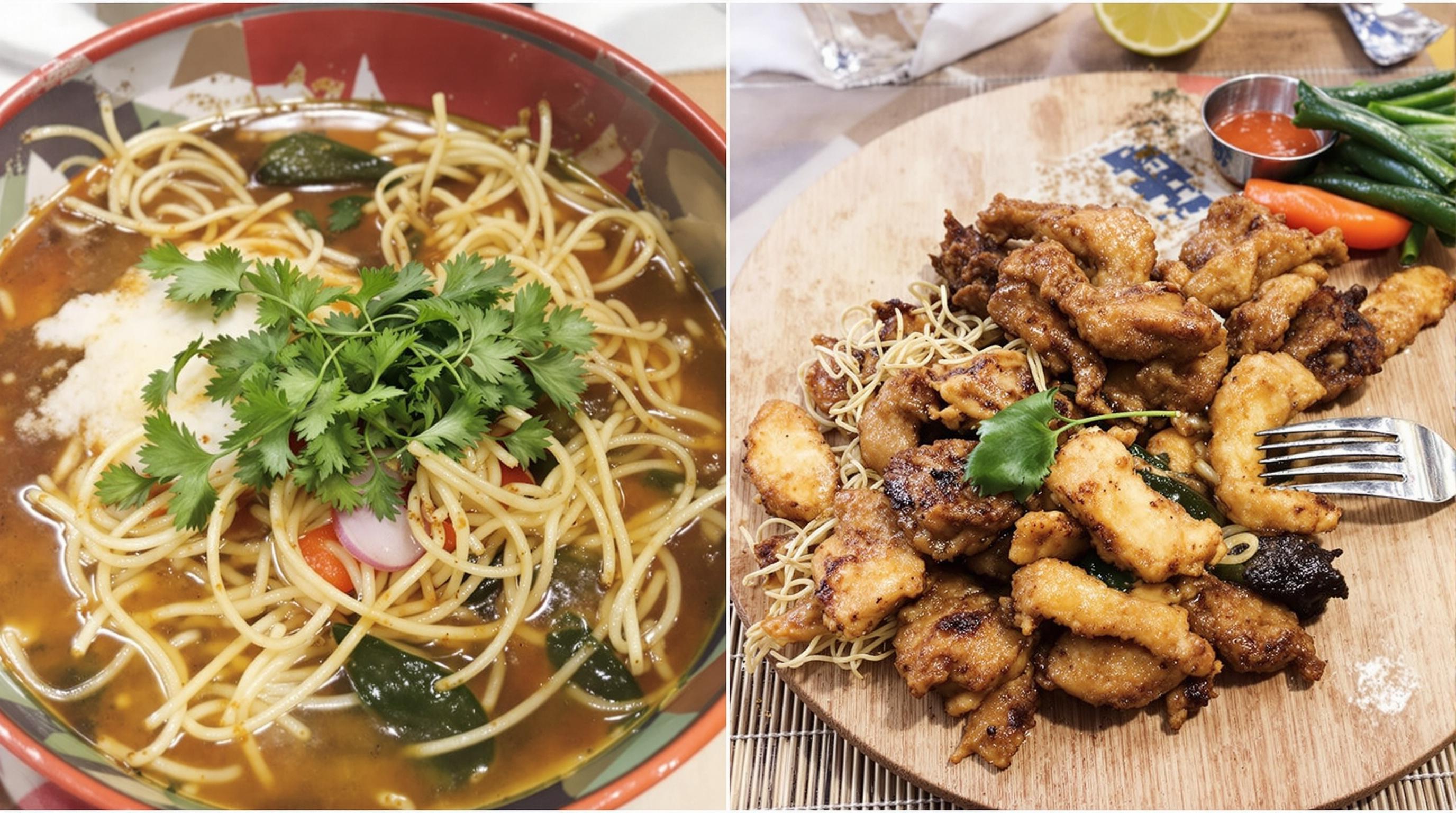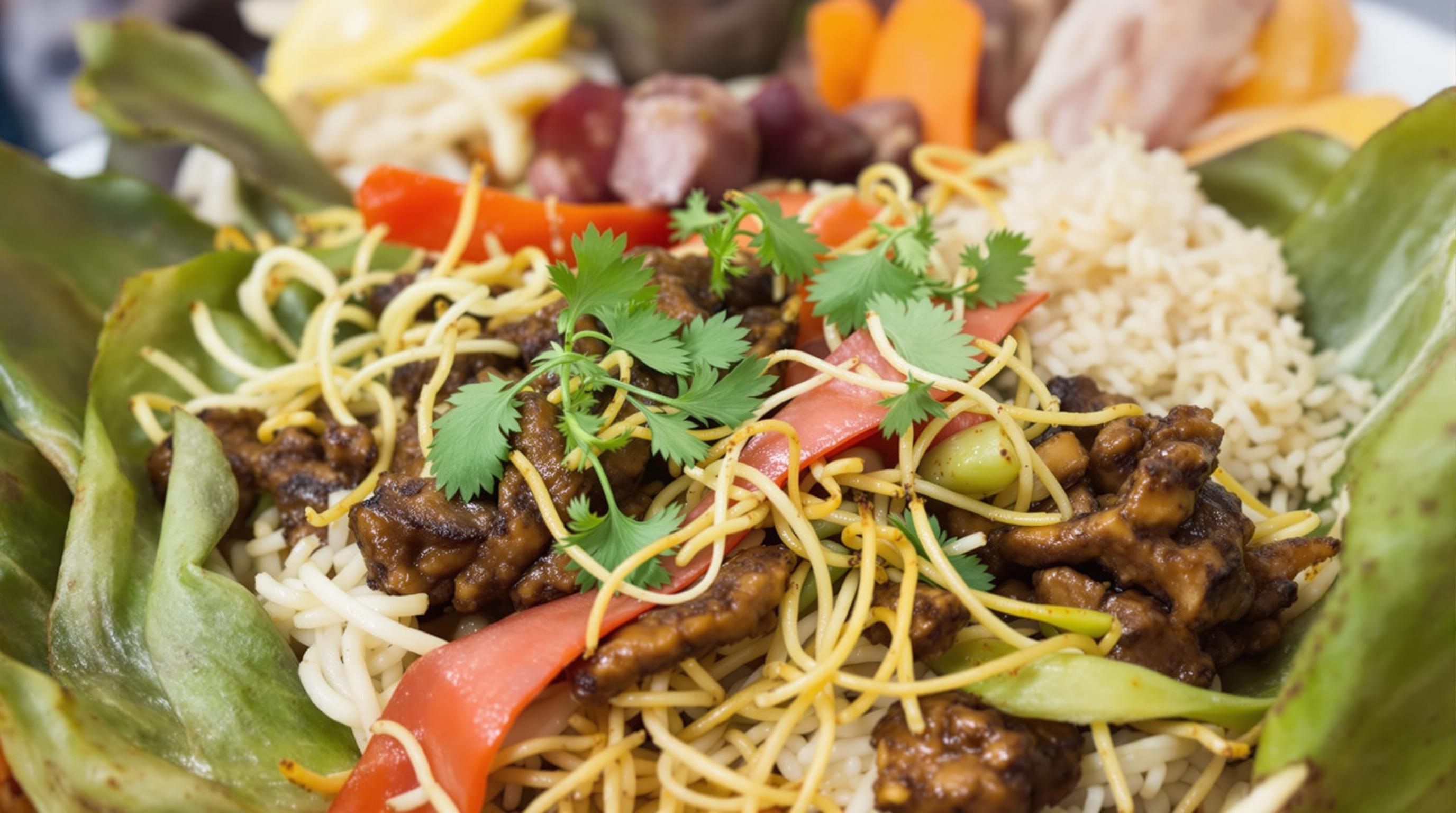Related Articles
- Culinary Cartography: The Unexpected Foods Shaping Local Identity in Urban Landscapes
- Flavors of the Forgotten: Rediscovering Culinary Traditions in the Shadows of Modern Food Trends
- Palate Pilgrimage: The Unlikely Fusion of Ancient Rituals and Modern Local Fare
- Ecosystem Engineers: Celebrating the Role of Nature-Based Solutions in Transforming Eco-Travel Experiences
- Ghost Towns and Green Trails: Unearthing Sustainable Journeys Through Forgotten Landscapes
- Hidden Footprints: Decoding the Carbon Footprint of Digital Nomadism in Edging Towards Sustainable Getaways
12 Obscure Local Delicacies That Transport You to Hidden Culinary Realms and Uncover Extraordinary Taste Traditions
12 Obscure Local Delicacies That Transport You to Hidden Culinary Realms and Uncover Extraordinary Taste Traditions
12 Obscure Local Delicacies That Transport You to Hidden Culinary Realms
1. Beshbarmak – Kazakhstan
Beshbarmak, which translates to "five fingers," is a traditional dish from Kazakhstan that exemplifies the nomadic lifestyle of its people. Typically made with boiled lamb or beef, the dish is served over wide handmade noodles that have been cooked in the rich meat broth. This embrace of hand-eating reflects deep cultural significance, literally connecting the diner to their food.
The preparation of Beshbarmak is a labor of love, often reserved for weddings and family gatherings, highlighting the importance of community and celebration in Kazakh culture. The dish is commonly accompanied by kazy, a type of sausage made from horse meat, adding complexity to its already rich flavors.
Culinary experts marvel at how this dish symbolizes the essence of Kazakh identity, contributing to its rise in global culinary discussions. With its blend of textures and flavors, it's a dish that transports one directly to the expansive steppes of Central Asia.
2. Pani Puri – India
Pani Puri is a beloved street food across India, yet its true origins stem from the Indian states of Maharashtra and Uttar Pradesh. Comprising hollow, crispy puris filled with spicy tamarind water, potatoes, chickpeas, and spices, Pani Puri offers a burst of flavors that dance on the palate. Each puri serves as an edible vessel, amplifying the excitement of this snack.
Local variations add layers of complexity, with some regions opting for different fillings or types of water—sweet, spicy, or tangy. The lively act of eating Pani Puri, often shared among friends, encapsulates a unique social experience that reflects India’s vibrant street food culture.
While making a Pani Puri might seem simple, the art lies in balancing the spices and flavors, making it both a delightful treat and an intricate dance of culinary mastery. For anyone willing to embrace the chaos of an Indian market, this dish is a must-try that reveals the heart of local Indian flavors.
3. Hákarl – Iceland
Hákarl, or fermented shark, is a traditional Icelandic dish that many Western palates find challenging. It’s made from Greenland shark, which is toxic if consumed fresh due to its high urea and trimethylamine oxide content. To prepare Hákarl, the shark is buried in the ground for several months, allowing fermentation to occur, followed by drying and hanging. This unique method transforms the shark into a delicacy.
The resulting flavor is pungent and somewhat ammonia-like, distinctively reflecting Iceland's harsh coastal heritage. Hákarl is often served with a shot of Brennivín, a local schnapps, which pairs surprisingly well considering the strong flavor profile.
Embracing Hákarl can feel akin to mastering an acquired taste, yet those who venture to try it open themselves up to a cornerstone of Icelandic culinary tradition. It's a testament to how cultures find value in every element of their environment, turning potential peril into culinary pride.
4. Kiviak – Greenland
Hailing from Greenland, Kiviak is a unique delicacy made from a specific type of bird, the auks, which are fermented inside the carcass of a seal. Traditionally prepared during the winter months, this dish combines indigenous practices with the brutal landscape of the Arctic, signifying resilience and resourcefulness.
The auks are placed within the seal, then buried under rocks for several months. This fermentation process can be quite potent, producing an aroma that is not easily forgotten. The taste is rich and salty, reflecting the natural flavors of both the bird and the seal.
Kiviak is typically reserved for special occasions, such as holidays or significant communal gatherings, acting as both sustenance and a shared cultural artifact. Eating it is an adventure, transforming those who dare to try it into witnesses of a culinary heritage passed down through generations.
5. Fugu – Japan
Fugu, or pufferfish, is famed in Japan for its delicate flavor and dangerous potential. Chefs must undergo rigorous training to become certified to prepare this dish, skillfully removing the poisonous parts to ensure the meat is safe to eat. The thrill of dining on Fugu is not only about the taste but the inherent risks involved.
Prepared as sashimi, the translucent slices of Fugu are often served with ponzu sauce and garnished with green onions. Diners appreciate not just the flavor but the exquisite presentation, which becomes a significant aspect of the experience. Some believe that the mild paralysis caused by the fish can enhance taste sensations, adding to its allure.
This duality of risk and reward makes Fugu a symbol of both sophistication and caution in Japanese cuisine. It's more than just a meal; it's a thrilling journey that tests the limits of culinary boundaries.
6. Menudo – Mexico
Menudo is a traditional Mexican soup made from beef tripe and hominy, often enjoyed during special occasions or as a remedy for hangovers. Each family might have its own variation of the dish, which usually features a rich, spiced broth infused with chilies and herbs, creating a comforting yet invigorating meal.
This dish reveals the importance of communal dining in Mexican culture, frequently enjoyed in large gatherings. It is often served with lime, radishes, and tortillas, allowing diners to customize their experience. The distinct, rich flavor of Menudo can transport anyone to the bustling kitchens of Mexico.
Celebrated for its heartiness and robust flavors, Menudo also connects generations as families pass down their recipes, making it both a nostalgic and vital part of culinary heritage across the country.
7. Haggis – Scotland
Haggis is often regarded as Scotland’s national dish, made from sheep's heart, liver, and lungs mixed with oats and spices, all traditionally encased in the sheep's stomach and slow-cooked. Haggis offers an intriguing combination of textures and flavors, from the richness of the organ meats to the nutty texture of the oats.
Much more than just a meal, Haggis is steeped in Scottish history and poetry, famously celebrated during Burns Night—a tribute to poet Robert Burns. The dish is often accompanied by neeps (turnips) and tatties (mashed potatoes), providing comforting balance to its hearty components.
For visitors to Scotland, indulging in Haggis honors local tradition, allowing them to partake in a communal experience that transcends mere gastronomy. It showcases the heart of Scottish culinary culture, where stories and flavors entwine.
8. Cuy – Peru
Cuy, or guinea pig, has been a traditional source of protein in Peru for centuries. Often served roasted or fried, it is typically featured at local celebrations, and its preparation is a mark of status and community. The dish is beautifully presented, often with the head still intact, showcasing the pride taken in its preparation.
Biting into Cuy reveals a flavor somewhat akin to rabbit but richer in taste, often seasoned with native herbs and spices that celebrate Peru’s biodiversity. The experience of eating Cuy not only satisfies the palate but also connects diners to centuries-old indigenous traditions.
Controversial yet celebrated, Cuy embodies the complex relationship between culture and cuisine, demonstrating how taste traditions evolve through history. For those who appreciate culinary adventures, this dish invites exploration and discovery.
9. Răcitură – Romania
Răcitură is a jellied meat dish originating from Romania, traditionally made from pork or beef, slow-cooked until tender and then chilled until it forms a jelly. Its preparation is often linked to family gatherings, making it a nostalgic centerpiece in Romanian celebrations. The delicate texture contrasts with the hearty meatiness, providing a unique mouthfeel that is deeply satisfying.
This dish is usually flavored with garlic and vinegar, giving it a subtle tang that enhances the overall experience. Răcitură is often served during festive events, and each family may offer their unique twist, showcasing local ingredients and techniques.
In enjoying Răcitură, diners not only embrace a culinary adventure but also partake in a tradition that highlights the importance of shared meals within Romanian culture. It's a delightful representation of both simplicity and the intricate layers of local flavors.
10. Balut – Philippines
Balut, a fertilized duck egg with a developing embryo, is a popular street food in the Philippines. It's typically boiled and eaten as a snack, accompanied by salt or vinegar, and experienced both as a culinary treat and a cultural symbol of local cuisine. While it may challenge many palates, Balut holds a unique place in culinary tradition.
Considered an aphrodisiac by some, this dish also serves to showcase Filipino resourcefulness, making the most of their agricultural landscape. Balut is often sold by street vendors, enticing adventurous travelers with its authenticity and intrigue.
By indulging in Balut, diners step outside their comfort zones, engaging with a food that tells the story of Filipino culture—its values, traditions, and deep connection to the land. It's an experience that transcends mere consumption and dives into the heart of the Philippines’ culinary heritage.
Each of these twelve local delicacies transcends mere sustenance, opening culinary doors to understand the heart of different cultures. Through adventurous dining experiences, food lovers worldwide can appreciate the diverse ways human beings adapt ingredients, techniques, and tradition into unforgettable meals. Together, they reveal the extraordinary tapestry of our global culinary landscape.




